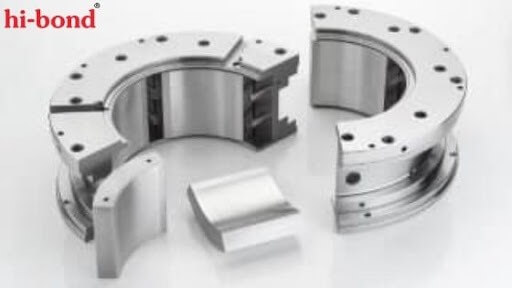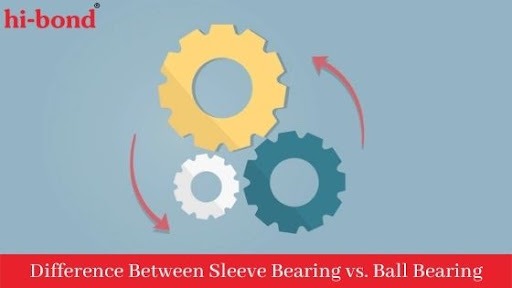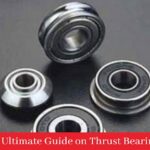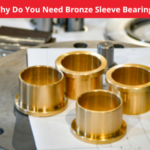Bearings are designed to have smooth, low-friction movement. This means the surfaces will glide past each other without friction.
For example, a shaft may connect to two axles, both of which may be rotating. Bearings allow one shaft or axle to rotate relative to the other while constraining relative axial motion. Bearings also can provide some rotational support.
Among the numerous types of bearings available in the market, ball bearings and sleeve bearings are two of the most commonly-used bearings across most industries.
In this blog, we’ll take a deep look at the difference between sleeve bearing and ball bearing in detail.
5 Differences Between Sleeve Bearing and Ball Bearing
Before we go into the differences between ball and sleeve bearings, let’s first understand the two main categories: rolling and sliding.
Rolling bearings use rolling elements to reduce friction and support rotation. Sliding bearings use sliding elements to reduce friction and support rotation. Here, the sleeve bearings come under sliding bearings and ball bearings come under rolling bearings.
With that in mind, let’s look more deeply into the differences between these two.
The Basic Construction:
Ball bearings are the simplest and most common bearing design.
Ball bearings are rolling-element bearings. The rolling elements are usually balls or rollers. A ball bearing consists of an inner race, an outer race and balls or rollers arranged between these races. The balls or rollers are held together by radial and axial loads. Ball bearings are self-aligning.
The balls are smaller than the rest of the bearing, so they slip easily in the space between the race and the cage. The cages are made of steel, which is harder than the bearing metal. The balls roll freely in the space between the race and the cage, free to move in any direction. Because of this, the cage and the race must be constructed in such a way that the balls can easily move in all directions. The balls roll easily because the balls have no contact with the rest of the bearing.
The housing, or raceway, is made of a base material and a coating made of either ceramic or silicon nitride. The layer protects from corrosion, wear, and abrasion.
On the other hand, a sleeve bearing is a bearing in which the rolling elements are contained within a cylindrical housing. The rolling elements are attached to the housing and extend radially inward.
Sleeve bearings are versatile bearings that can operate at high speeds and have high load capacity. They are often used for applications where a compact design is required. An outer race encloses sleeve bearings, inner race and cage assembly.
The common types of sleeve bearings used are flanged, cylindrical and linear sleeve bearings.
Mounting:
Choosing the bearing based on the mounting position is essential.
While both bearings can be mounted in any direction, it’s recommended not to mount sleeve bearings in a horizontal position. But ball bearings are capable of being mounted in any position.
This is possible by preloading, which is achieved by placing the bearings into a groove in the shaft, thus springing them into position.
Temperature Tolerance:
The bearing life of a sleeve bearing fan is usually shorter than that of a ball bearing fan unless the operating temperature is low. If the operating temperature is high, then ball bearing fans are generally preferred.
Sleeve bearings can’t operate at temperatures above 70-degree Celsius and therefore, you need to take note of the surrounding temperature of the bearings before choosing them.
A standard sleeve bearing fan is operated at between 35°C and 50°C. This type of bearing draws in air from outside and passes it around inside the bearing and outlet air is drawn in through the top. Because of the lack of circulation within the bearing, the bearing temperature can quickly increase.
On the other hand, a ball bearing fan has a central bearing surrounded by many balls. The bearings are lubricated and as air is drawn in and pushed around within the bearing — thus circulating the air inside the bearing and keeping the temperature low.
Noise:
In general, the noise levels of sleeve bearings are lesser than ball bearings.
However, the newer models of ball bearings have caught up to it. Because of the spherical shape and low friction in ball bearings can easily tolerate misalignment, roughness, and vibrations. And when rightly preloaded, they have fewer noise disturbances.
Application:

Since ball bearings are tolerant to higher temperatures than sleeve bearings, it also has better longevity. So if you’re looking for a bearing to be used in high-temperature surroundings with long life, like for cars, then ball bearings are the best choice.
But if your application is in a low-temperature area and requires horizontal mounting, then it’s best to go with sleeve bearings.
To know exactly about the type of bearing that’s suitable for your needs, please contact your bearings and bushes suppliers. Based on your working conditions and requirements, your bearing manufacturing company can guide you to choose the best type and model of bearing.
At Hi-bond, we have over 30 years of experience in manufacturing bearings and bushings. We are supplying thrust bearings, ball bearings, sleeve bearings, flange bearings, tr-metal bearings and bushings for over manufacturing units in 30+ countries.
So if you want to choose the right bearing for your application, please reach out to our experts and choose from our high-quality, top-grade bearings.




